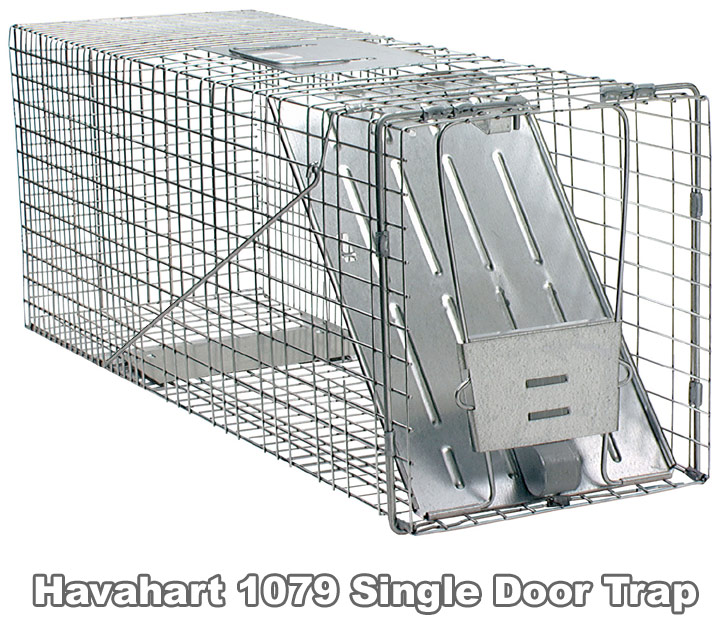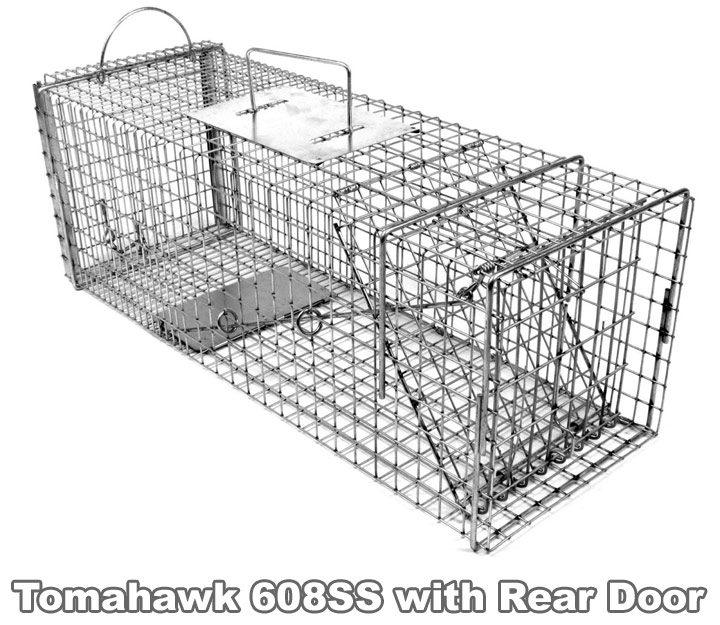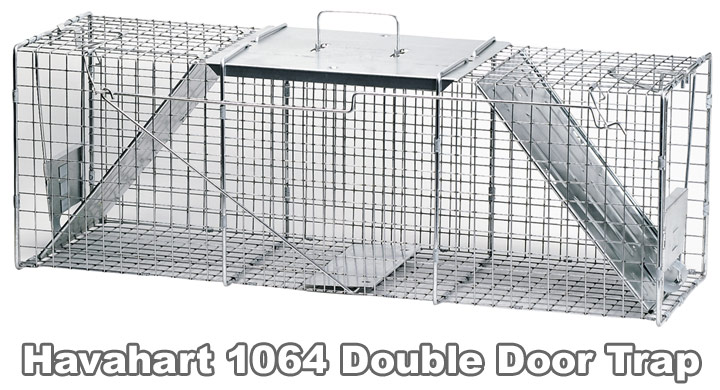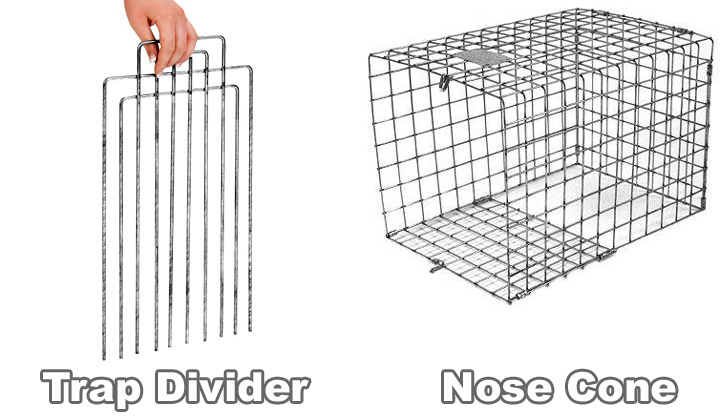I do not recommend do-it-yourself raccoon trapping. Something ALWAYS goes wrong. It's amazing what you don't know. It'll trip the trap without getting caught, and then you'll wind up with a cage-shy raccoon,
you'll trap the neighbor's cat, you'll trap the wrong raccoon, a trapped raccoon will reach out of the trap and rip something, you'll catch a lactating female and unknowingly leave young starving somewhere, you'll
break the law, the animal will suffer, etc.
But, the point of this website is to provide as much information on the subject of raccoon removal as I can, so here are some of the supplies you can use for raccoon removal. Please educate yourself as much
as possible before doing it yourself - even then, you're most likely going to have a problem, despite your confidence,
and it'll be too late for me to say "I told you so".
If you need professional help, click my Hire A Pro page. I've compiled the USA's best directory of raccoon removal experts.
I don't sell any supplies. Sometimes a local hardware store like Home Depot or Lowe's will sell these traps, or you can order them online, if you own a computer with an internet connection, however unlikely that may be.

This is a common, less expensive raccoon cage. The Havahart 1079 is 10" wide by 12" high, by 32" long. It'll usually cost around $50. This is adequate size for most raccoons 25 lbs and under. This trap is not as sturdy as some
other models, and you may have a problem with an especially large or strong raccoon, but honestly, this is the model of trap that I've used for most of my career, and I've had great success with it.

Here is another brand of trap. This model is sturdier and more expensive, about $90. It features a rear-release door, which is convenient, because releasing a raccoon through the front door can be very tricky if you're inexperienced. A second
carrying handle is convenient, and the rings on the trip pan bar help prevent bending. Truth be told, I've never used this model, but I've heard good support from other trappers.

This is a double-door cage trap. Sometimes this type of trap will catch a cage-shy raccoon. The animal can see that it's open on both ends, and thus is less cautious to enter the trap. Of course, there are many other things you
can do to make a trap more appealing to enter - make it stable, line the bottom with a towel or leaves, and location is always key.

On the left, you'll see a trap divider. I commonly use these when I do the old baby-raccoons-as-bait trick. I set the baby raccoons behind the trip pan, and hold them back there with a trap divider. On the right, you'll see
what is called a nose cone. These are very handy when you want to steer a raccoon into a trap, if the animal is coming out of a hole in the roof, for example, such as seen here: trapping out of roof.

One-way doors are a great tool. The raccoon goes out, then it can't get back in! Problem solved! The only consideration is whether or not the raccoon will simply be able to rip open a new entry hole. They are very strong animals.
And if you've blocked out a female with babies inside, I can guarantee you that she'll rip a new area open. One way exclusion doors for raccoons must be VERY sturdy and strong, and bolted into the house with many strong screws and washers.

Many types of bait will lure in raccoons. They are omnivores and scavengers. My favorite bait is marshmallows, because they're clean, they don't attract cats, raccoons are attracted to the shape and color, and raccoons
like sweets. However, bait is the LEAST important factor when it comes to trapping success. I have other thoughts and considerations on my raccoon bait page.
Other raccoon trapping supplies include screws, washers, and bolts to secure traps to roofs or walls, as you can see I often do, or steel screening to put below a cage, if you don't want a roof-trapped raccoon to
tear up your shingles, or a ground-trapped raccoon to tear up the lawn, dig up wires, etc. You also might want to put a cardboard cover or wood cover over the trap, to give the animal shade. That can be very important.
Remember, a trapped raccoon can be very scared, maybe dehydrated, in pain, etc. Please be nice to these animals, they have emotions just like a pet dog.
If you do catch one, read my raccoon relocation advice.
Wildlife Education - Raccoon Trapping Supplies and Cage Trap Models